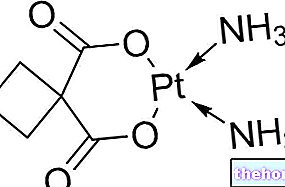Generality
The term psychotropic drugs is a generic term, with which we want to indicate the set of all those active ingredients that act at the level of the central nervous system, influencing - in a positive or negative way - the release of different types of neurotransmitters.

The characteristics of these drug classes will be briefly described below.
Antidepressants
Antidepressants are psychotropic drugs widely used in the treatment of mood disorders, such as depression and bipolar disorder, but not only. In fact, these active ingredients are also used in the treatment of other disorders and pathologies, such as neuropathic pain, obsessive disorders - compulsive and even in smoking cessation therapy.
Psychoactive drugs with antidepressant action perform their activity substantially through the modulation of serotoninergic, noradrenergic and dopaminergic neurotransmission. More precisely, antidepressants increase the signal of these neurotransmitters.
Classification
Antidepressants can be classified according to their chemical structure or according to their mechanism of action. Therefore, this large class of drugs can be divided as follows:
- Tricyclic antidepressants (or TCAs): These are the first antidepressants to be discovered, but are little used today due to the many side effects they are capable of developing. In fact, TCAs - in addition to increasing noradrenergic and serotonergic transmission - also act at the level of other receptor sites, thus causing undesirable effects of various kinds, some of which are even serious.
This group includes active ingredients such as amitriptyline and clomipramine. - Selective Serotonin Reuptake Inhibitors (or SSRIs): These psychiatric drugs selectively enhance the signal of the neurotransmitter serotonin. This group includes active ingredients such as fluoxetine, sertraline and paroxetine.
Furthermore, some of these active ingredients have also been shown to be particularly useful in the treatment of some forms of anxiety. - Selective norepinephrine reuptake inhibitors (or NARI): the active substances belonging to this group selectively increase noradrenergic neurotransmission. These include reboxetine.
- Dopamine and norepinephrine reuptake inhibitors (or DNRIs): antidepressants belonging to this group mainly enhance dopaminergic and, to a lesser extent, noradrenergic transmission. Among these active ingredients, we mention bupropion (a drug which, among other things, is also used in smoking cessation therapy).
- Modulators of noradrenergic and serotonergic transmission (or NASSA): this type of psychotropic drug exerts its antidepressant action by increasing the signal of noradrenaline and serotonin through the interaction with specific receptors for these two types of neurotransmitters.
Among the active ingredients belonging to this group, we mention mirtazapine.Inhibitors of monoamine oxidase type A (or MAOI-A): these antidepressants increase the signal of monoamines by inhibiting the enzymes responsible for their metabolism. Phenelzine and moclobemide belong to this group. - Mood stabilizers: this particular group of psychotropic drugs - to which lithium carbonate belongs - is used in the treatment of bipolar disorder.
For more detailed information about this class of drugs, we recommend reading the dedicated article already present on this site: "Antidepressants".
Side effects
Being a very broad class of drugs, the type of side effects that can occur following the use of antidepressants varies greatly depending on the type of active ingredient chosen, as well as the sensitivity that each individual has towards the drug that you want to employ.
Anxiolytics
Anxiolytic drugs are psychotropic drugs that are used in the treatment of anxiety disorders of various kinds, such as, for example, generalized anxiety disorders, obsessive-compulsive disorders, post-traumatic stress disorders, panic attacks and phobias.
Since it is believed that anxiety disorders are related to the activities of neurotransmitters such as γ-aminobutyric acid (GABA), serotonin and noradrenaline, the anxiolytic drugs currently used in therapy act at the level of the receptors for the aforementioned neurotransmitters .
The main types of anxiolytic drugs usually used in therapy will be briefly described below. In any case, for more information, please refer to the "dedicated article" Anxiolytics - Anxiolytic Drugs ".
Benzodiazepines
Benzodiazepines (BZD) are psychotropic drugs widely used for the treatment of anxiety and exert their activity through the enhancement of the GABA signal. GABA, in fact, is the most important inhibitory neurotransmitter of our central nervous system.
For this reason, the increase in GABAergic transmission induced by benzodiazepines is very useful in combating anxiety disorders.
Among the various benzodiazepines used in this field, we remember diazepam and lorazepam.
For more information about the uses and typical side effects of this type of psychotropic drug, we recommend reading the "Benzodiazepine" dedicated article.
Partial agonists of serotonin receptors
The psychotropic drugs belonging to this group of anxiolytic drugs exert their action through the partial agonism against the 5-HT1A serotonin receptors.
Among the active ingredients belonging to this group we remember buspirone and ipsapirone.
The main side effects induced by these active ingredients are nausea, headache and dizziness. However, unlike benzodiazepines, partial 5-HT1A receptor agonists do not cause sedation or movement disorders.
Beta blockers
Beta-blockers are used not so much for the treatment of anxiety itself, as to reduce the symptoms associated with it, such as tachycardia, tremors and palpitations. Among the active ingredients belonging to this class of drugs we mention propranolol.
For more information on the mechanism of action of this type of drug, please refer to the dedicated article "Beta-blocking drugs".
Hypnotic sedatives
Hypnotic sedatives are a particular class of psychotropic drugs used in the treatment of "insomnia. For this reason, they are often referred to as" sleep drugs. "
The main drugs still used in therapy today are:
- Benzodiazepines (also with anxiolytic activity as well as sedative-hypnotic activity), such as triazolam, lorazepam, lormetazepam, diazepam, flurazepam, clonazepam and bromazepam.
- Z drugs, such as zolpidem, zopiclone and zaleplon.
- Barbiturates, these psychotropic drugs were the first hypnotic sedatives to be used in the treatment of insomnia. However, due to their narrow therapeutic index, the use of benzodiazepines or Z drugs is now preferred. In fact, at the moment barbiturates are used mostly as antiepileptics and anesthetics.
In any case, all the psychotropic drugs mentioned above are able to exert their sedative-hypnotic activity through the enhancement of the γ-aminobutyric acid signal, therefore through the increase of GABAergic transmission.
For more detailed information on this subject, we recommend consulting the "dedicated article" Hypnotic Sedatives: Drugs for Sleeping ".
Antipsychotics
Antipsychotics (or neuroleptics) are psychotropic drugs used in the treatment of various forms of psychosis, such as, for example, schizophrenia, schizophreniform disorders, delusional disorders or substance-induced psychotic disorders.
Most antipsychotic drugs work by decreasing dopaminergic transmission and increasing serotonergic transmission. In fact, it is believed that psychotic disorders can be caused by an excessive dopamine signal, which can be associated with a serotonin deficiency.
In any case, for more detailed information, we recommend reading the article "Antipsychotics - Antipsychotic Drugs".
Classification
Antipsychotics can be classified according to their chemical structure. Therefore, with this type of subdivision we can distinguish:
- Phenothiazines, which include active ingredients such as perphenazine and chlorpromazine. These psychotropic drugs exert their antipsychotic action through the antagonization of dopaminergic D2 receptors.
- Butyrophenones, are able to antagonize the D2 receptors and also have a certain affinity for the 5-HT2 receptors of serotonin. Active ingredients such as haloperidol and spiperone belong to this group.
- Benzamide derivatives, such as sulpiride. These active principles exert an "antagonistic action against the D2 receptors for dopamine.
- Benzazepine derivatives, such as clozapine, quetiapine and olanzapine which exert their antipsychotic action through antagonism towards both D2 and 5-HT2 receptors.
Side effects
The type of undesirable effects and the intensity with which they can occur substantially depend on the type of active principle to be used, on the chosen route of administration and on the sensitivity of each individual towards the drug.
However, the side effects caused by most antipsychotics consist of:
- Hypotension;
- Sedation;
- Gastrointestinal disorders;
- Vision disturbances;
- Neuroleptic malignant syndrome.
Central nervous system stimulants
This particular class of psychotropic drugs is used in the treatment of equally particular pathologies, such as, for example, narcolepsy and attention deficit hyperactivity disorder (or ADHD).
Generally, these active ingredients act by stimulating the release of monoamines, such as norepinephrine and dopamine, thus exerting a "psychostimulating action".
Active ingredients such as methylphenidate and modafinil belong to this diverse group of psychotropic drugs.




























